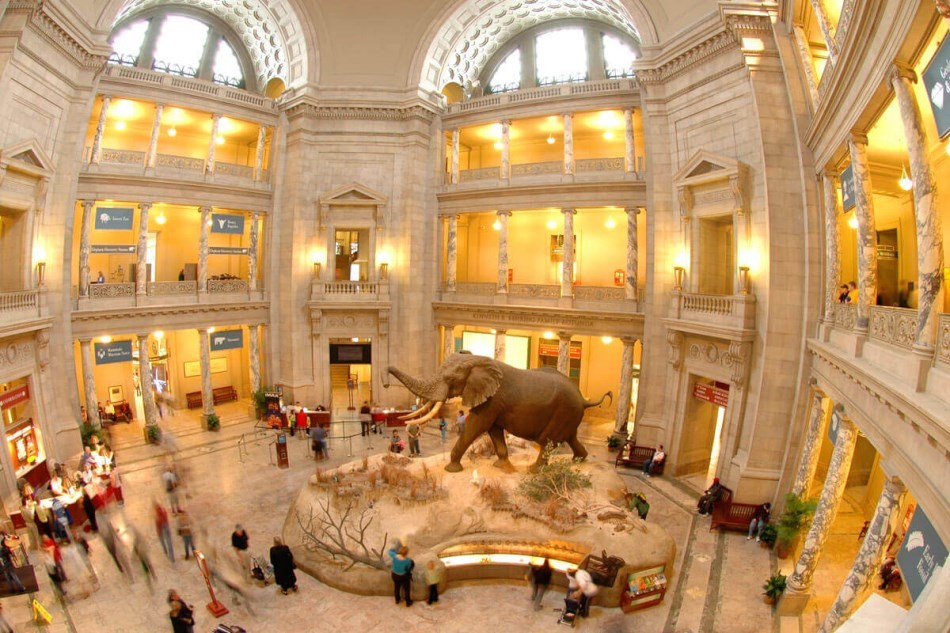Opened in 1910, the museum on the National Mall was one of the first Smithsonian buildings constructed exclusively to hold the national collections and research facilities. The main building has an overall area of 1.5 million square feet (140,000 m2) with 325,000 square feet (30,200 m2) of exhibition and public space and houses over 1,000 employees.
.jpg)
The museum's collections contain over 145 million specimens of plants, animals, fossils, minerals, rocks, meteorites, human remains, and human cultural artifacts, the largest natural history collection in the world. It is also home to about 185 professional natural history scientists—the largest group of scientists dedicated to the study of natural and cultural history in the world.
.jpg)
The Smithsonian gives an approximate number for artifacts and specimens of 146 million. More specifically, the collections include 30 million insects, 4.5 million plants preserved in the Museum's herbarium, and 7 million fish stored in liquid-filled jars. The museum has over 570,000 catalogued reptiles from around the world. The National Collection of Amphibians and Reptiles has more than tripled from 190,000 specimen records 1970 to over 580,000 specimen records in 2020. Of the 2 million cultural artifacts, 400,000 are photographs housed in the National Anthropological Archives. Through off-site active loan and exchange programs, the museum's collections can be accessed. As a result, 3.5 million specimens are out on loan every year. The rest of the collections not on display are stored in the non-public research areas of the museum and at the Museum Support Center, located in Suitland, MD. Other facilities include a marine science center in Ft. Pierce, Florida and field stations in Belize, Alaska, and Kenya.
.jpg)
Research in the museum is divided into seven departments: anthropology, botany, entomology, invertebrate zoology, mineral sciences, paleobiology, vertebrate zoology.
.png)
One collection of nearly a million specimens of birds, reptiles, and mammals kept at the museum has been maintained by the Biological Survey unit of the U.S. Geological Survey. This division had started in 1885 as an economic ornithology unit of the Agriculture Department. Clarence Birdseye and Clinton Hart Merriam had worked in this organization. As of February 2018, the unit's funding is planned to be cut, and it is not clear what would happen to the collection.
.jpg)
According to wikipedia





![[HONORARY PROFESSOR OF RECORD FOR PRACTICE AND EMPIRICAL RESULTS – 2024] RECORD HOLDER CHU BAO QUE (BAC GIANG PROVINCE, VIETNAM)](https://uskings.us/wp-content/uploads/2024/05/IMG_0386-218x150.jpg)


